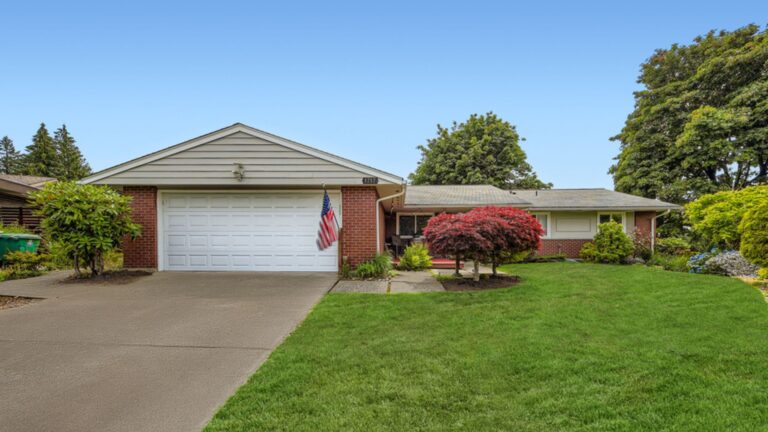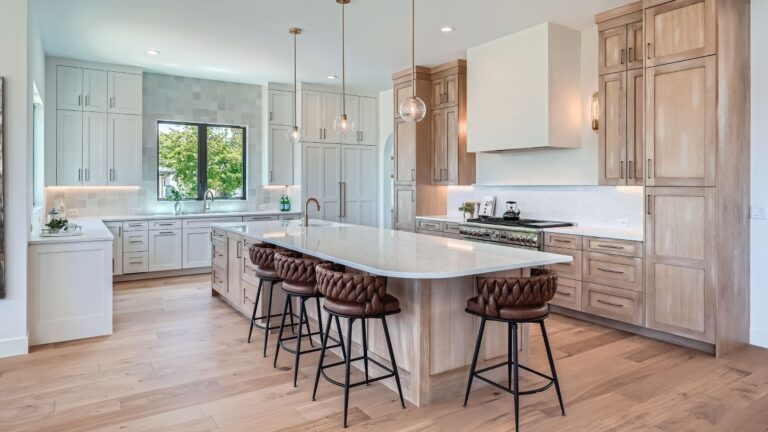Welcome back to Farm Friday! One of our most popular articles details the 15 things you should bring to a listing appointment, and I wanted to take the time this Friday to go over the best ways to prepare a listing presentation. The real estate industry is competitive, and listing volume continues to be lower than previous years’ averages in many parts of the country. When you prepare a listing presentation, you want to ensure that your prospective client understands why you are the best to sell their property. I’ve included plenty of advice here for you to add to your marketing efforts this spring while competing for listings.
Showcase Your Knowledge to Potential Clients
When preparing for a listing appointment, two main components are your knowledge base and presentation skills. The first step is always to know as much about the property as possible so that you can answer any questions the seller may have. You want to explain why the home is exceptional in an easy-to-understand way. If you’re not sure how to do this, don’t worry – I’ll cover some tips in this article.
The second component is your ability to present yourself well. This means being confident, having excellent eye contact, speaking clearly, and making good use of visuals. I will discuss these points in more detail below to help you prepare an effective presentation. Let’s get started!
Know Your Property
Before going into a listing appointment, make sure you know everything about the property. Do a thorough online search on Google or Bing. Read all the information available on Zillow, Trulia, Realtor.com, etc. Make sure you understand what makes the house unique and its history.
Also, find out if recent construction work has been done on the property. What was built? Who did it? How long ago? These are all critical pieces of information that potential buyers need to know before they even consider buying a home.
You also want to know what improvements could be made to the property. For example, if you see a leaky roof, you might suggest getting it fixed before putting the property on the market. If you see a broken window, you might recommend replacing it with double-pane glass. And if you see a room that needs updating, you might suggest painting it instead of tearing down walls.
Know the Neighborhood
You should also check out the local schools. Is the neighborhood safe? Are there parks nearby? Does the school district offer after-school programs? These factors play a role in determining whether a buyer would like to live in the area. Knowing the answers to these questions can help you position yourself as someone who knows the community well.
What Slides to Include in a Listing Presentation
Now that you’ve prepared a comprehensive list of questions, you’re ready to start presenting. Listing presentations are part of nearly all agents’ marketing strategies. Here are my top 10 slides real estate agents should include in every listing presentation to a prospective client.
1. Introduction Slide
This slide is used to introduce yourself and the company you represent to the potential seller. It should include your name, email address, phone number, website URL, and other relevant information.
2. Location Slide
This slide includes the property’s address, along with a map showing where it sits within the surrounding neighborhoods.
3. Comparative Market Analysis Slide
This slide shows the current condition of the property. It should describe the property’s location, size, age, features, amenities, condition, and value compared to similar properties in the area. You want to set yourself apart from other real estate professionals in the area, so don’t just show a generic slide. Show a slide for each type of property you have listed.
For example, if the property is a single-family home, show a slide comparing it to other homes in the same price range. If the property is an apartment complex, compare it to other complexes in the area.
4. Price Slide
The price slide shows the listing price for the property. In addition to the sales price, you may also wish to show the estimated time on market (EOT) and days on the market (DOM). The EOT represents how long it will take to sell the property at the current list price. The DOM means how many days the property may spend on the market before being sold. Both numbers give sellers insight into how much competition they face when selling their property.
5. Property Description Slide
This slide describes the property’s unique characteristics. It should include any significant structural issues or problems, such as mold, termites, or water damage. It should also include any critical details about the property, such as its square footage, lot size, parking spaces, garage space, etc.
6. Photos or Video Slide
If the property has photos or videos available, this slide should include them. They can serve as powerful visual aids while describing the property to your client, as well as robust marketing materials during the selling process.
7. Customer Testimonial from a Previous Client
You can use testimonials to demonstrate the quality of service provided by your firm. This slide can be included in your listing presentation to showcase previous clients’ positive experiences working with you during the sales process.
8. Marketing Plan Slide
A marketing plan is essential for any business. A real estate agent needs one too! This slide should include a description of what you plan to do to promote the property, including which social media platforms you’ll use, what advertising methods you’ll employ, and who you’ll target. Additionally, you can let them know about your pricing strategy, whether you will use professional photos, and what other special services you offer.
9. Recommended Vendors Slide
Vendors are businesses that provide services related to real estate transactions. These vendors could include mortgage lenders, title companies, inspectors, attorneys, appraisers, contractors, etc. This slide should include contact information for these recommended vendors.
10. Thank You Slide
Thank-you slides are common practice among real estate agents. This slide serves as a way to acknowledge your client for choosing you to represent them. Make sure to thank them for allowing you to help them find their dream home. You can also include your contact information here so that your prospective client can reach you when they’re ready to use your services.

How to Prepare for a Listing Presentation
Now that you’ve prepared yourself by learning everything you can about the property and preparing an effective listing presentation, it’s time to put it all together. Here are some tips to keep in mind when designing a listing presentation:
1. Know what you’re selling.
Before you start talking about the property itself, you need to know precisely what it is that you’re trying to sell. It could be a single-family home, a condo, townhouse, duplex, or another property type.
2. Be specific.
Don’t just say “the house.” Say, “the three-bedroom, one-bath ranch located at 123 Main Street.” Or “the four-bedroom, two-bath colonial located at 12 Elm Drive.” Don’t generalize.
3. Use visual aids.
If you’re presenting a property with many rooms, try using pictures. A picture speaks 1,000 words. Professional real estate images go a long way toward building your brand as a Realtor.
4. Keep it short.
If you’re giving a presentation, you only have a few minutes to convince the seller that they should list their property with you. So please don’t waste time telling them how wonderful their home is. Instead, focus on why they should choose you over other agents.
5. Speak from experience.
When you speak about the property, talk about things you’ve seen firsthand. Describe the condition of the interior and exterior. Talk about any repairs that need to be made. Tell the seller what you think the property will cost them to fix up.
6. Show off the best features.
When showing off the property, highlight its best features. You don’t want to leave anything out. This includes the backyard, the kitchen, the bathroom, the bedrooms, the living room, and so on.
7. Always end on a positive note.
At the end of the presentation, tell the seller what results you expect for the price range they want to sell for. Then ask them if they’d like to schedule an appointment to view the property together.
8. Follow up.
After making an appointment to show the property, follow through. Ensure that the seller sees the property the way you plan to present it to potential buyers during the scheduled viewing. Also, make sure that you get feedback from the seller regarding the property.
9. Ask for referrals.
After the seller makes an appointment to see the property, ask them to refer you to friends and family. Referrals are necessary because they give you more credibility within the market.
10. Always thank the seller.
When you finish speaking with the seller, always thank them for choosing you to represent them. If the seller asks you to do something, such as sign a contract or prepare a purchase agreement, always do it.
11. Practice!
Practice your presentation until you feel comfortable. Remember that this is an essential part of being a successful agent.
12. Get help.
If you still aren’t ready to present, consider hiring a professional specializing in preparing presentations. The right person can take away all of the stress and worry of a listing presentation.
13. Know when to stop.
You may not realize it, but there’s a point where you’ll become too tired to continue presenting. Stop talking and let the seller know that you’re finished when that happens.
14. Be yourself.
Remember that you’re representing yourself. You’re not selling a product; you’re selling yourself. Your personality plays a significant role in whether or not someone chooses to hire you.
15. Have fun.
Remember that you’re doing this for a reason — to sell houses. Don’t forget to enjoy yourself while you’re at it. After all, you’re working hard to earn money.
16. Keep learning.
Keep learning new techniques. Read books, attend seminars, and watch videos. Learn everything you can about real estate sales.
17. Stay motivated.
Don’t lose sight of your goal. Even though you might have some setbacks along the way, keep moving forward. Never stop believing that you can succeed.
Want More Real Estate Marketing Content Like This?
Sign up for The Good Stuff, our weekly email newsletter, to get content like this in your email inbox every week! We promise we’re worth it.








